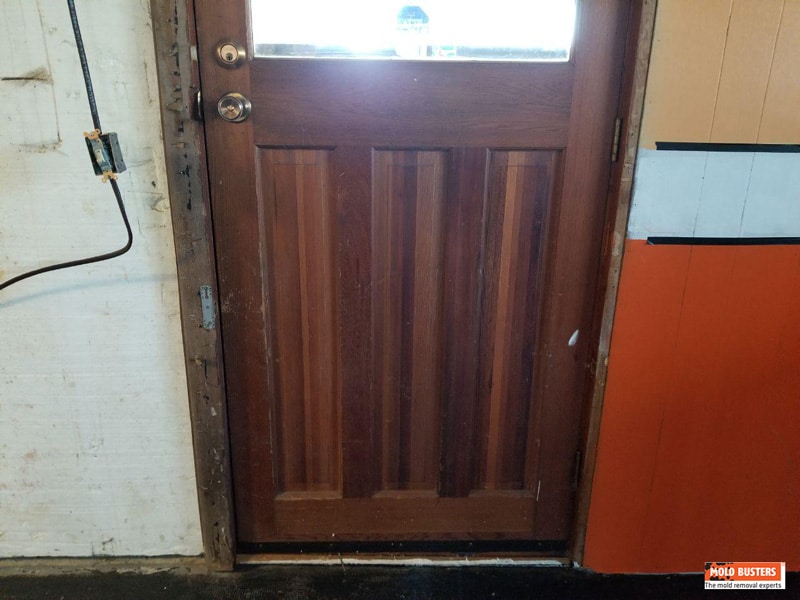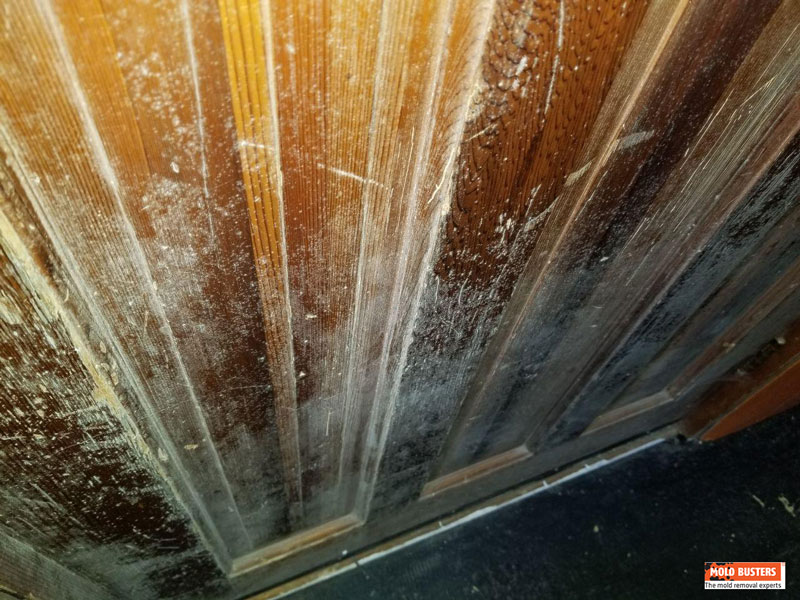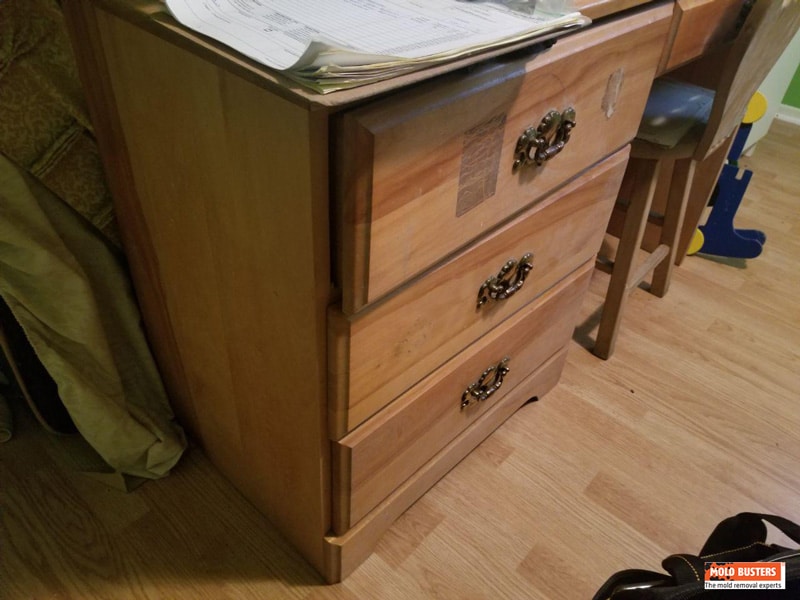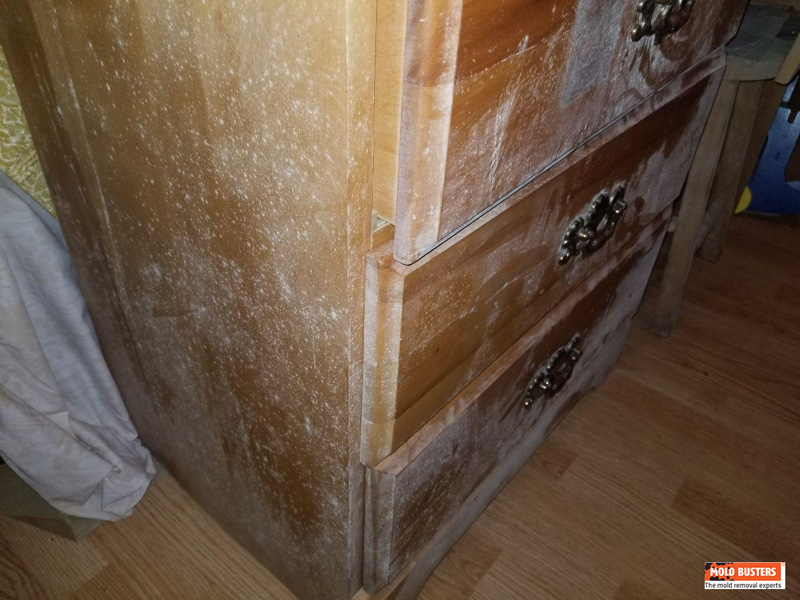Mold Inspection in Manotick – How We Found Invisible Mold
When we were contacted by Leanne, a Manotick homeowner, she had been waking up every morning with a sore throat and blocked sinuses. Interestingly enough, she did not experience these symptoms when she slept in any other room of her home. She was convinced that there was some kind of hidden issue in her bedroom, but she had no idea what it could be. Thanks to one of her colleagues, Leanne decided to contact Mold Busters and get her air quality tested.
Location
Manotick, Ottawa, ON
Client
Homeowner
Problem
Experiencing health problems after sleeping in bedroom
Service Provided
Indoor Air Quality Testing
Visually assessing the home for signs of mold and water damage
As part of every air quality test, Mold Busters Ottawa performs a visual mold inspection, which includes thermal imaging of the exterior walls, moisture readings of building materials, temperature and humidity measurements, and a host of other supporting diagnostics.
In Leanne’s case, everything appeared to be normal. Walls and ceilings were not compromised. No active moisture was detected. There were no carpets or major textiles in the bedroom area that could be housing particulates.
An inspection of the home’s exterior revealed proper moisture diversion and grading that was adequately sloped away from the home. The eaves-troughs were in mint condition, and the roof shingles had no visible signs of compromise. According to our inspector, all diagnostics were pointing to normal indoor environmental conditions
Collecting and analyzing air samples
Our next step was to collect non-viable air quality samples from the bedroom and basement, as well as from the outside (to act as a baseline). These samples were then shipped to a third-party microbiological laboratory for detailed analysis.
In two days, the air quality test results were ready. Needless to say, we were baffled by what we saw!
According to the laboratory data, high concentrations of Stachybotrys and Penicillium/Aspergillus spores were present in the bedroom and basement areas (neither of which had displayed any visual signs of fungal contamination). These two types of toxic mold are well-known for producing potent mycotoxins that, upon exposure, can cause toxigenic and pathogenic reactions in humans.
But where was the mold coming from?
Now that we knew what the problem was, we had to determine where it was coming from. Since the home was heated electrically, this eliminated the possibility that the mold spores were being circulated through the air via the furnace system. We decided that the best course of action would be to visit the home again and take another look.
We contacted Leanne immediately and scheduled a same-day follow-up inspection to locate the source of the mold contamination in her home.
The mold was hiding in plain sight!
Pictured below is a door in Leanne’s basement that led to a semi-exterior mudroom. There was nothing special about this door, until we opened it for ourselves during our second visit.
We found that it was not actually an exterior door. It was a little flimsy and not as heavy as it should have been. That prompted us to inspect the seals, weather stripping, and other components around the door. Surprisingly, nothing was out of the ordinary here either.

However, when we started to examine the door from an awkward downward angle using a high-powered flashlight, we were able to see a fungal paradise growing on the door, hidden in plain sight (see picture below).

We realized what had happened:
- The door was not properly insulated and then exposed to outdoor elements.
- When it got cold outside, our natural tendency to heat our indoor environment led to the formation of condensation on the door. In other words, this door was absorbing the cold outdoor air from one side and the warm indoor air from the other. The result was moisture buildup on its surface.
- With this combination of moisture (condensation) and food (settled dust on the door), mold started to grow. It continued to propagate as a result of the conditions not changing.
It wasn’t until the right light hit it at the right angle that we were able to uncover its cozy hideaway.
With this new discovery, we went back to the bedroom and turned off the light. Equipped with our powerful LED flashlights, we unveiled the hidden spore metropolis that was thriving in our client’s bedroom.

This desk was in Leanne’s bedroom, where she spent her time sewing quilts and other gifts for family and friends. At first sight, there was absolutely nothing out of the ordinary about this desk. It was not up against an exterior wall, and there was no evidence of water damage or other problems. In fact, our client had owned it for years, after getting it for free from a Kijiji ad in Manotick.
Now watch what happened as we examined the bedroom from a downward angle using a 2,000-lumen light.

It’s hard to believe that this is the same desk, but it is. It looked like someone had sprinkled icing sugar all over it. You can even see fingerprints on the drawers, where Leanne had unknowingly been touching the mold for years.
What caused the mold to grow on the bedroom furniture?
Unlike most residential mold problems we deal with in Manotick, Leanne’s bedroom mold was not caused by indoor environment factors. In fact, the home itself was in great shape. We already deduced this when we conducted the first air quality assessment. There was no evidence to support an issue originating from the building materials or construction of the home (aside from the basement, of course).
Exposure to toxic species of mold like Stachybotrys and Aspergillus/Penicillium, as was the case with Leanne, can cause a host of health issues, from sore throat, headaches, and fatigue to respiratory illness, allergies, and even cancer.
This was now visible evidence of a health threat in Leanne’s bedroom. We could now proceed in forming an effective strategy to remediate the mold safely and effectively.
Removing the mold from the bedroom safely
With Leanne’s permission, we removed and disposed of all mold-contaminated belongings, including the desk and basement door. Afterwards, we performed a thorough cleaning of her entire home using HEPA vacuums and eco-botanical fungicides on all surfaces. We gave our client some recommendations on how to prevent this from happening again. Needles to say, she quickly followed through with the most pertinent ones.
Finally, we performed free follow-up air quality testing throughout her home to ensure that it was now safe for occupancy. The laboratory results revealed that her home was clean and contained a normal fungal ecology. With the mold gone, Leanne’s health problems resolved soon after too. Another happy ending for Mold Busters!
This case study goes to show that mold problems can often be overlooked. If, for any reason, you suspect an issue with mold or air quality in your Ottawa home, contact Ottawa’s mold inspection and removal experts at 613-686-3792.